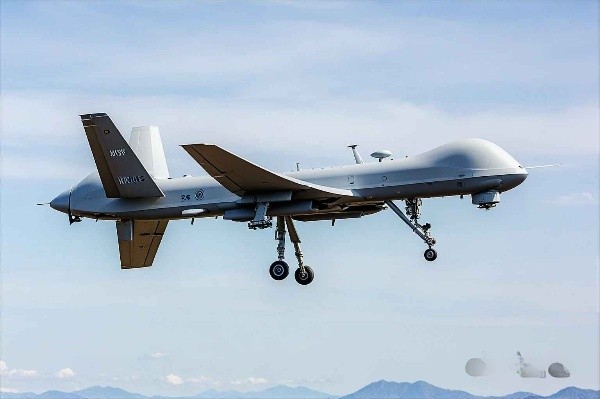Iran’s Plan to Strike Back Against the U.S.
Iran’s Military Preparations Following U.S. Attacks
Loading...

In the past week, two American MQ-9 Reaper drones were downed over the Marib and Saada provinces of Yemen by the Yemeni military while they were carrying out spying operations.
Recent Events in Yemeni Airspace
In a striking development, two U.S. MQ-9 Reaper drones were recently downed over the Marib and Saada provinces in Yemen. Brigadier General Yahya Saree, spokesperson for the Yemeni Armed Forces (YAF), announced that one of these drones was shot down while engaged in hostile operations in Saada. This marks the ninth incident of its kind since October 2023, highlighting the efficacy of Yemeni military capabilities against advanced U.S. technology.
The MQ-9 Reaper: A Technological Marvel
The MQ-9 Reaper, developed by General Atomics and introduced in 2007, is a sophisticated unmanned aerial vehicle (UAV) used extensively by the U.S. Air Force. Designed for intelligence, surveillance, reconnaissance (ISR), and precision strike missions, this drone is equipped with advanced radar systems, high-resolution cameras, and sensors capable of a 360-degree scan. It can carry a payload of up to 1,700 kg, including AGM-114 Hellfire II air-to-surface missiles and GBU-12 Paveway II laser-guided bombs.
With a wingspan of 20 meters and a maximum speed of 310 km/h, the MQ-9 can operate in harsh weather conditions and fly for up to 27 hours. It has been utilized not just by the United States but also by countries like the United Kingdom, France, and Italy. The drone's deployment in Yemen often originates from airbases in Djibouti, ostensibly for anti-piracy and counter-terrorism operations. However, the broader strategic aim is likely the control of key regions like the Bab-el-Mandeb Strait.
Yemen’s Military Strategy and International Ramifications
The downing of these drones signifies a shift in military dynamics, as Yemen continues its regional operations in solidarity with Palestine, targeting the U.S., Israel, and their allies. These actions are part of Yemen's broader strategy to end what it describes as a genocidal war in Gaza. The successful targeting of the MQ-9 Reapers, valued at $30 million each, has resulted in a significant financial loss for the U.S., with approximately $360 million worth of drones lost in Yemen alone.
Chronology and Analysis of Drone Shootings
The history of MQ-9 Reaper shootings by Yemeni forces dates back to October 2017, with notable incidents in June and August 2019. Since the onset of the Gaza conflict, nine additional drones have been downed. The first in this series occurred on November 8, 2023, over Yemeni waters, followed by several others, including a notable incident on February 19, 2024, where Yemeni forces released footage of the precise targeting and downing of a drone using a locally-made surface-to-air missile.
Despite U.S. attempts to downplay these incidents, Yemeni forces have consistently provided visual evidence to substantiate their claims. The Yemeni strategy involves the use of advanced, albeit mysterious, missile systems capable of overcoming the MQ-9's sophisticated electronic warfare defenses. These successes underscore Yemen's growing military competence and pose questions about U.S. air superiority in the region.
Conclusion: Implications and Future Outlook
The repeated downing of MQ-9 Reapers by Yemeni forces not only highlights the resilience and ingenuity of Yemeni military tactics but also exposes vulnerabilities in U.S. drone operations. The incidents have prompted questions about the effectiveness of U.S. military strategies in conflict zones and the potential need for recalibrating its approach in regions like Yemen. As Yemen continues its campaign in support of Palestinian resistance, the international community watches closely, aware that these developments could have far-reaching implications for regional stability and global military engagements.
BMM - MBA
Iran’s Military Preparations Following U.S. Attacks
Troops remain in five strategic locations, raising fears of renewed tensions and long-term occupation.
Opposition forces have taken control of the capital after a significant offensive. Here is how it unravelled.
